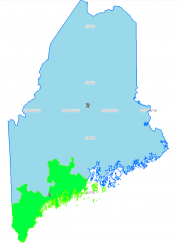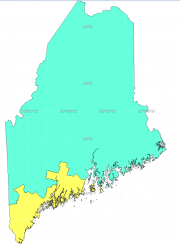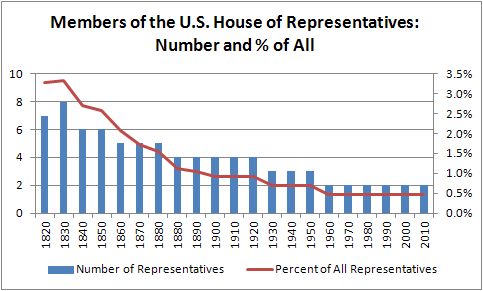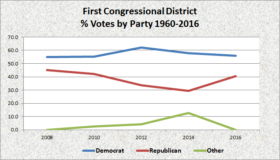Maine once had as many as eight members of the U.S. House of Representatives, thus eight congressional districts. When Maine achieved statehood in 1820, Congress assigned the new state one At-Large Representative, leaving Massachusetts with its allotted 20 Representatives. In the 17th Congress (1821–1823), the final Congress before the apportionment following the 4th Census (1820), Congress reassigned seven Massachusetts Representatives to Maine, leaving Massachusetts with 13 Members of the House.
With its six or more districts from 1820 to 1860, Maine held from 3.3% to 2.1% of the seats in the U.S. House, at a time when the total number of districts was no more than 241. (The current number is 435.)
As recently as the late 195o’s, the state had three congressional districts. Beginning in 1962, the current two district allocation has been in effect. With one member elected from each district, Maine now accounts for 1/2 of one percent of the total membership if the U.S. House. The 1st District is in southern Maine. The 2nd District, encompassing about 80% of the state, covers over 27,000 square miles and has been the largest district east of the Mississippi. (The two U.S. Senate members are elected “at large” from the whole state.)
As the state’s population shifts more toward the south, the northern area has relatively fewer people. To keep the two districts about even, as required by the U.S. Constitution, the 2nd Congressional District must expand geographically at each census to encompass more towns to make up for the loss of population.
Additional resources
“House History. Congressional Apportionment.” U.S. Congress. http://artandhistory.house.gov/house_history/congApp/bystate.aspx (accessed December 23, 2011)






